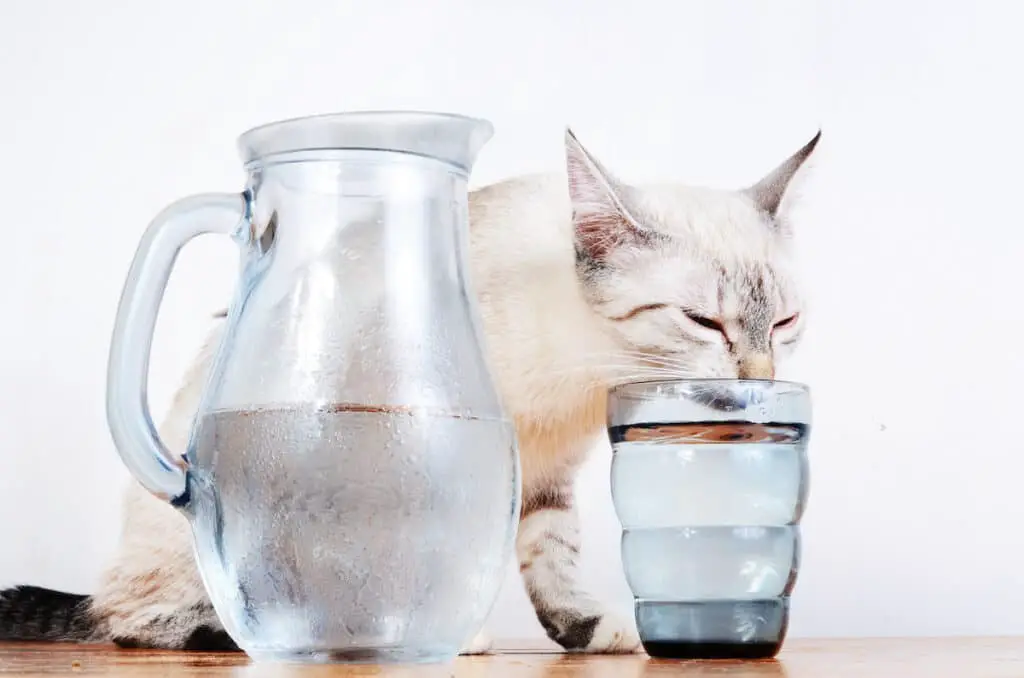Polydipsia is the term used by veterinarians to indicate increased thirst. Polyuria is the term used to describe cats that urinate abundantly. Because drinking more water causes you to urinate more frequently, both diseases frequently coexist. If your cat is displaying these signs, take him to the vet for a checkup to rule out any diseases that could be life-threatening.
Your cat’s eating, drinking, and urinating habits may alter as he ages. Although this can happen as we age naturally, it could also be a sign of a more serious medical disease.
Symptoms of Increased Urination and Thirst in Cats
The main signs of this illness include increased water consumption, frequent urination, and urinating outside of the litter box.
Types
Your cat may drink more water and urinate more frequently than usual for a variety of reasons. The following are some of the most prevalent kinds affecting domestic cats:
- Kidney diseases
- Metabolic conditions
- Thyroid issues
Causes of Increased Urination and Thirst in Cats
Numerous behavioral and physical conditions can make cats more likely to urinate and drink more water. Some of the most typical causes are listed below:
Aging
Cats age differently than people do, and at the age of 12, they are regarded as elders. Your cat may experience certain changes in their daily routine as they age, such as drinking more water and going to the bathroom more frequently. Cats may have trouble using their litter boxes as they age, and you could notice them soiling other parts of the house.
Diabetes
Increased thirst and urination are frequently warning signs of diabetes in cats. This hormonal condition arises when your cat’s body is unable to produce enough insulin. Your cat’s pee will therefore contain sugar as a result of this. If your cat is overweight, male, and older than five years old, he is more prone to have this illness. The weakness of the rear legs, weight loss, increased hunger, and hair loss are further signs of diabetes in cats.
Hyperthyroidism
Cats can develop hyperthyroidism just like humans do. This illness will manifest in your cat if his thyroid gland generates more hormones than his body requires. Cats often experience this after turning 12 years old. Vomiting, diarrhea, a desire for cool temperatures, weight loss, an increase in appetite, and heightened excitability are further signs of hyperthyroidism.
Chronic kidney disease
Cats of any age can develop chronic renal disease, however it typically affects older cats. It may lead your cat to urinate more frequently and drink more water than usual. Additionally, it could result in weight loss, decreased appetite, nausea, and vomiting. Your cat needs extra water to hydrate himself because of the chronic kidney illness he has because it makes his kidneys less efficient.
Diagnosis of Increased Urination and Thirst in Cats
To ascertain what is causing your cat’s symptoms, your doctor will need to check him. Before performing a physical examination, he will take your cat’s temperature, weight, heart rate, and respiration rate. Your veterinarian will also quiz you about the health history of your cat.
Include any details that can aid him in making a diagnosis, such as the time the symptoms started, any past illnesses, and odd habits. Laboratory testing play a crucial role in the diagnosis. For a complete blood count and a full chemical profile, your doctor will take blood. In addition, he will collect a urine sample for testing. To rule out any anomalies in your cat’s urinary tract or other systems, an X-ray will also be done.
Treatment of Increased Urination and Thirst in Cats
The cause of cats’ excessive urination and thirst will determine the appropriate course of treatment. If your cat is otherwise healthy, he might just be going through the normal aging process. Diabetes-affected cats could need insulin shots and a particular diet to manage their blood sugar. Your cat may need to receive treatment for hyperthyroidism at a specialized veterinary facility or take oral meds. If it is discovered that your cat has chronic renal disease, your veterinarian may put him on a kidney-friendly diet and administer medication as necessary. In any event, your vet could advise continuously keeping an eye on or controlling the cat’s water intake.
Concerned about the expense of treating increased thirst and urination?
Many common pet health concerns are covered by pet insurance. Get a quotation from top pet insurance companies to be ready for the unexpected.
Recovery of Increased Urination and Thirst in Cats
Your veterinarian’s diagnosis and treatment strategy will determine how well your cat recovers. You can only manage symptoms when this ailment cannot be treated in many cases. Your veterinarian will continue to check on your cat every few months if he is diagnosed with a problem that needs medication. To keep your cat healthy, it’s crucial to report any changes in his condition as soon as you can.














